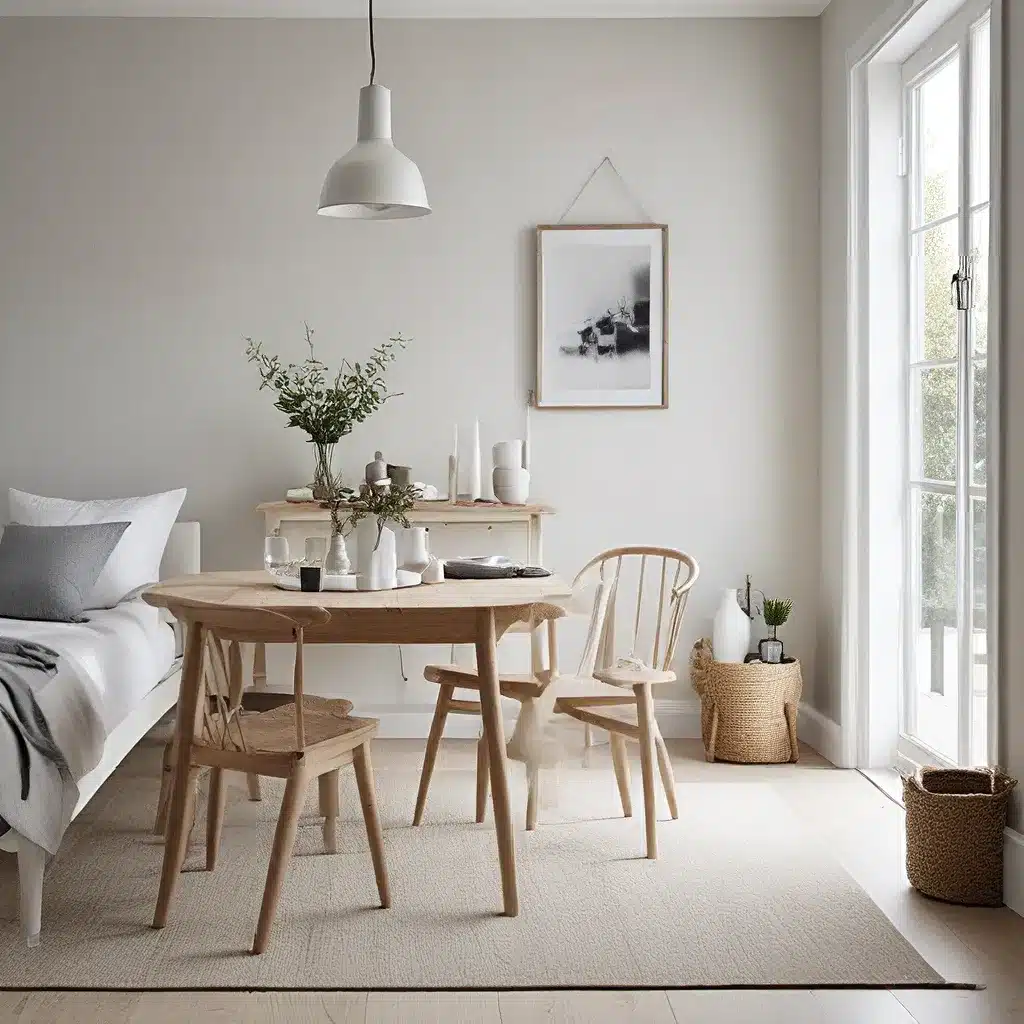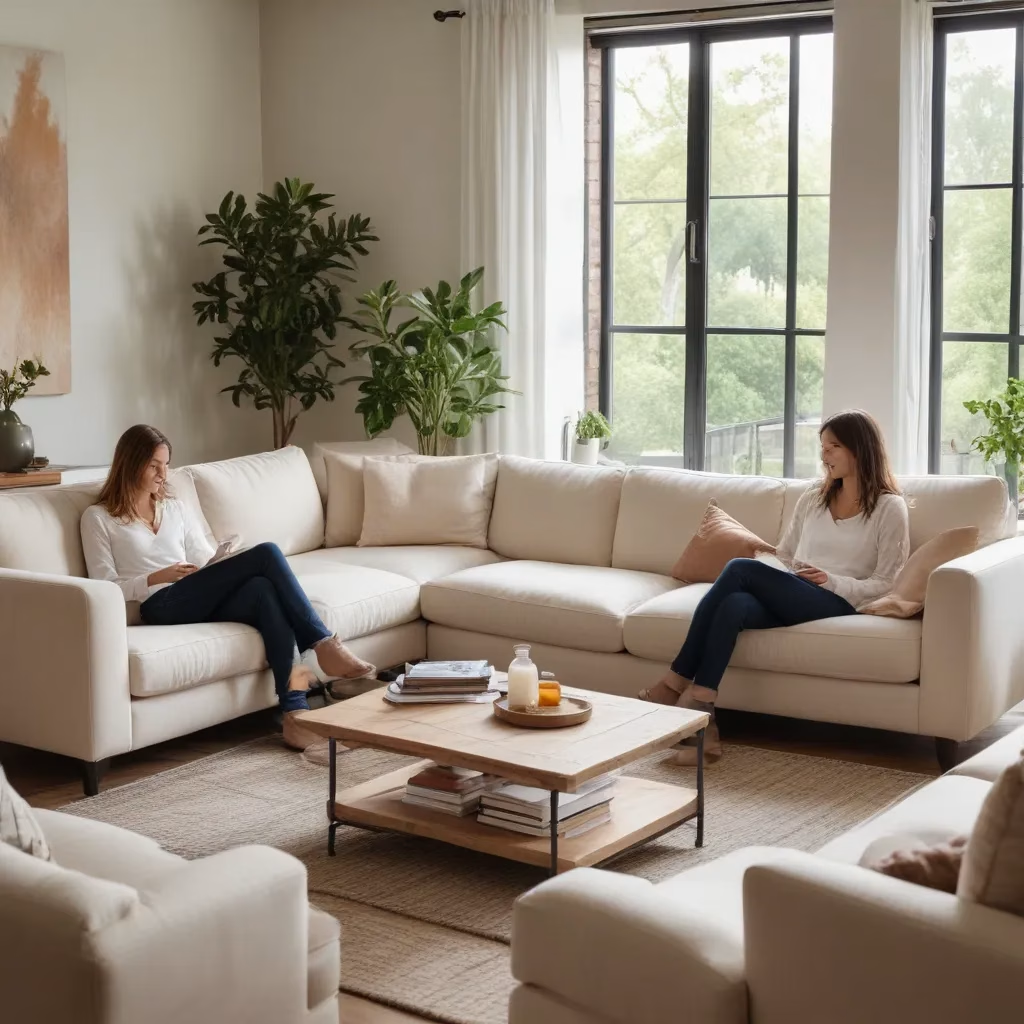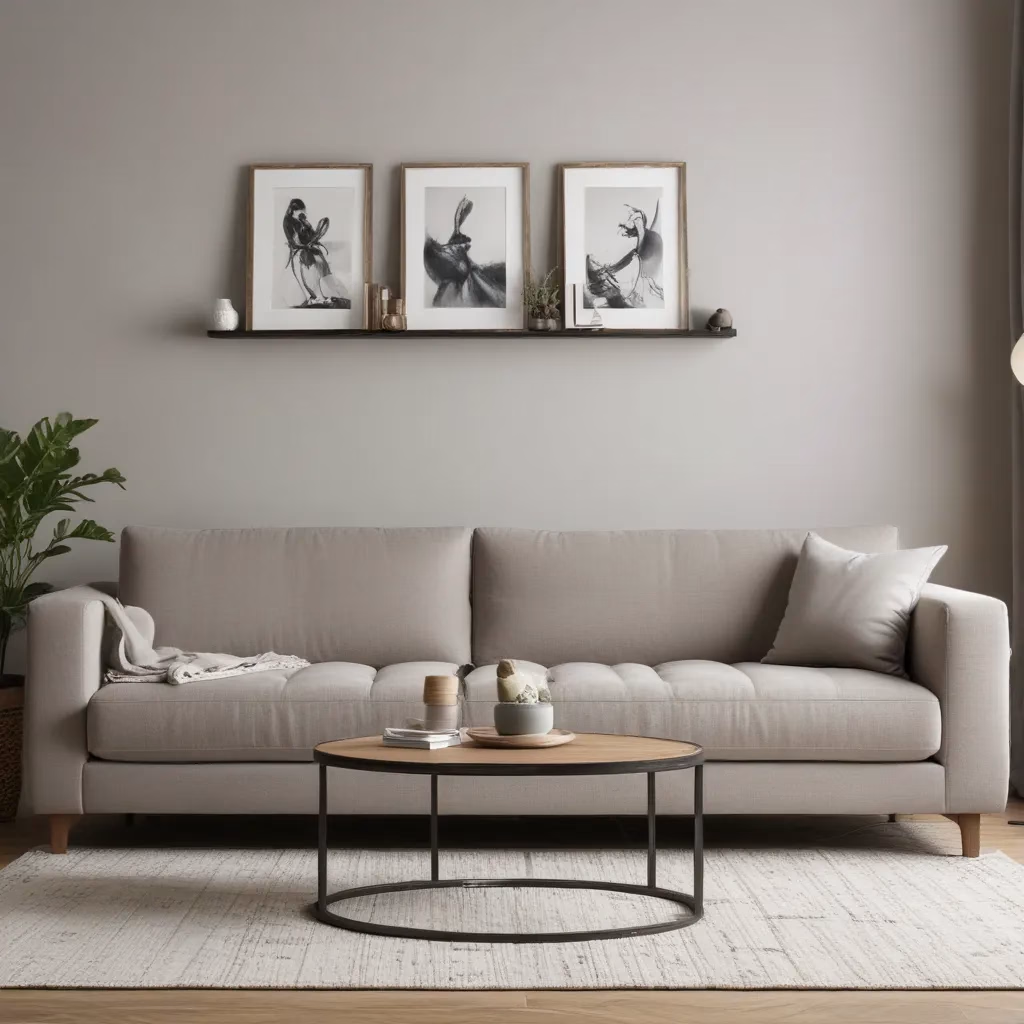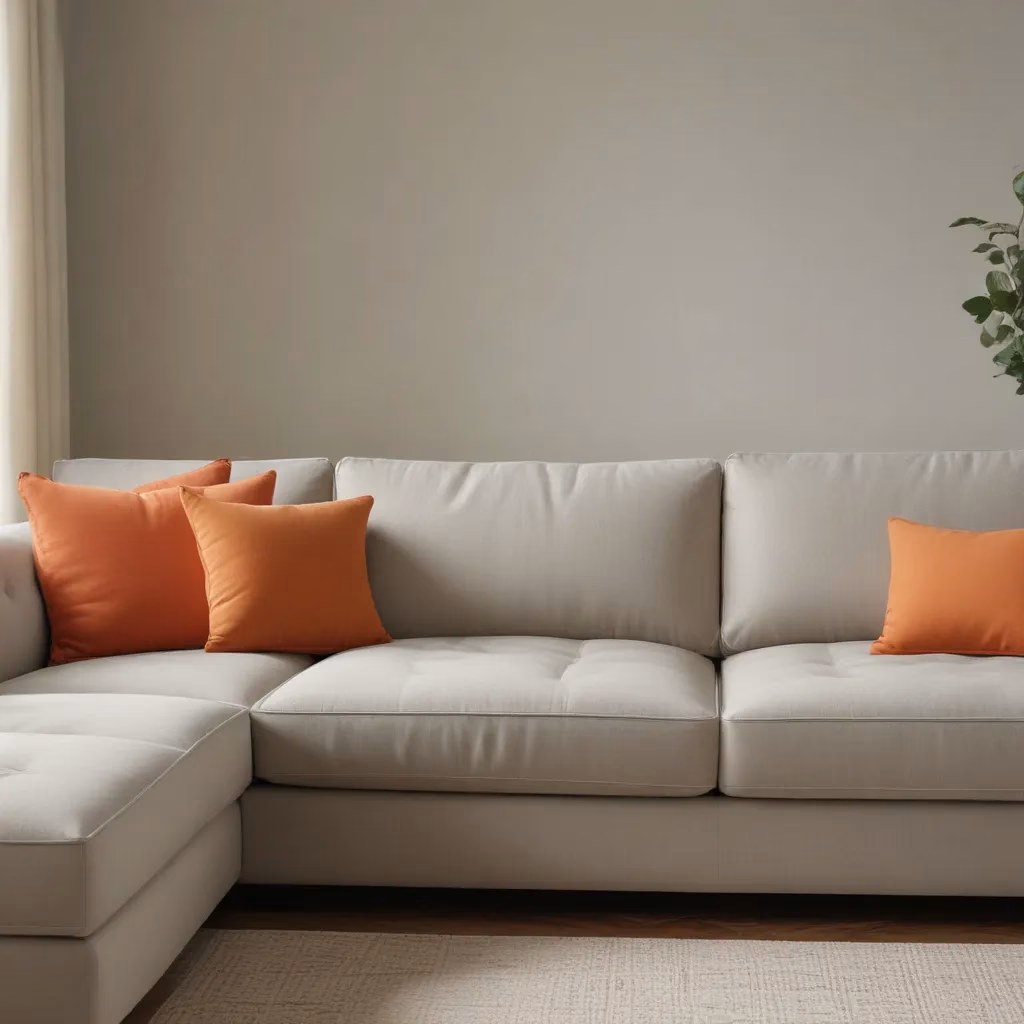
Ah, the allure of Scandinavian design – a symphony of minimalism, functionality, and timeless elegance that has captivated hearts and homes worldwide. As a self-proclaimed design enthusiast, I’ve long been enchanted by the soothing, serene aura that emanates from these meticulously curated spaces. And let me tell you, I’ve just discovered a new obsession that takes this aesthetic to the next level: Japandi.
Now, you might be wondering, “Japandi? What on earth is that?” Well, my friend, buckle up, because I’m about to take you on a journey through the harmonious fusion of Scandinavian and Japanese design principles – a match made in interior design heaven.
Unveiling the Japandi Masterpiece
Imagine a world where the clean lines and muted tones of Scandinavian design meet the serene sophistication of Japanese aesthetics. That’s Japandi in a nutshell – a harmonious blend that creates spaces that are as calming as they are visually striking.
At the heart of this style lies a shared appreciation for minimalism, functionality, and a deep reverence for natural materials. Both Scandinavian and Japanese cultures share a profound connection with the great outdoors, and this reverence is reflected in the design choices that define the Japandi look.
Think warm, earthy tones, natural wood accents, and a masterful use of light to create a sense of openness and tranquility. It’s a design philosophy that celebrates the beauty of simplicity, where less is truly more.
Embracing the Wabi-Sabi Mindset
One of the key principles that bridges the gap between Scandinavian and Japanese design is the concept of Wabi-Sabi. This ancient Japanese aesthetic embraces the beauty of imperfection, celebrating the inherent flaws and irregularities that make each object unique.
In the Japandi realm, this translates to a reverence for handcrafted pieces, where the slight variations and subtle imperfections add character and charm. Imagine a beautifully weathered wooden table, its grain telling a story of its own, or a subtly asymmetrical ceramic vase, a testament to the artisan’s touch.
This appreciation for the imperfect and the unconventional is a refreshing departure from the mass-produced, cookie-cutter aesthetic that has become all too common in our modern world. Japandi invites us to slow down, to savor the beauty in the small, and to find joy in the unexpected.
Harmonizing Form and Function
One of the hallmarks of Scandinavian design is its unwavering commitment to functionality. These designers understood that true beauty lies not only in the aesthetics, but also in the practical, everyday usability of their creations. Japandi takes this principle and elevates it, blending form and function seamlessly.
Imagine a sleek, minimalist kitchen, where every element is thoughtfully positioned to maximize efficiency and streamline the cooking experience. Or a living room that seamlessly incorporates storage solutions, ensuring a clutter-free, serene environment.
But Japandi isn’t just about practicality – it’s about crafting spaces that ignite the senses. The use of natural materials like wood, stone, and textiles creates a tactile experience that invites you to touch, to feel, to truly engage with your surroundings.
Achieving the Japandi Aesthetic
So, how do you bring the enchanting world of Japandi into your own home? It’s all about striking the right balance between the clean, pared-back aesthetic of Scandinavian design and the refined elegance of Japanese style.
Start by establishing a neutral color palette, anchored in shades of white, beige, and soft gray. These soothing hues create a blank canvas that allows the natural textures and materials to shine. Incorporate pops of muted, earthy tones – think dusty pinks, sage greens, or subtle blues – to add depth and personality.
When it comes to furnishings, embrace minimalist forms with clean lines and gentle curves. Opt for pieces crafted from natural materials like oak, bamboo, or rattan, and consider incorporating handmade or artisanal elements to infuse your space with that coveted Wabi-Sabi charm.
Don’t be afraid to layer different textures – plush throws, woven baskets, or even a statement-making Zanafi kilim rug – to create a sense of warmth and depth. And remember, less is often more, so focus on curating a few well-chosen pieces that truly speak to you.
Lastly, let natural light be your ally. Maximizing the flow of daylight through large windows or strategically placed mirrors can instantly transform a space, imbuing it with a sense of openness and tranquility that is so integral to the Japandi aesthetic.
Embracing the Japandi Lifestyle
But Japandi is more than just a design style – it’s a way of living. It’s about embracing the art of slow living, savoring the beauty in the everyday, and finding serenity amidst the chaos of modern life.
It’s about surrounding yourself with intentional pieces that spark joy and serve a purpose, rather than accumulating clutter for the sake of it. It’s about creating a sanctuary within your own home, a retreat from the outside world where you can truly unwind and recharge.
As you embark on your Japandi journey, I encourage you to adopt a mindful approach. Savor the process of curating your space, allowing each element to speak to you on a deeper level. Experiment with different arrangements, play with proportions, and most importantly, trust your instincts.
Remember, the beauty of Japandi lies not just in the aesthetics, but in the emotional connection it cultivates. It’s about creating a harmonious environment that nourishes the soul, a space that inspires you to slow down, breathe deeply, and simply be.
So, my friends, are you ready to embark on a Japandi-inspired journey? Whether you’re starting from scratch or gently infusing your existing space with the essence of this captivating style, I can assure you that the rewards will be nothing short of transformative.
Imagine sinking into a plush, Sofa Spectacular sofa, wrapped in a soft, cozy throw, as the filtered light dances across the natural wood accents in your living room. Doesn’t that sound like the ultimate sanctuary of serenity?
So, let’s get started, shall we? Together, let’s uncover the secrets of Japandi, and create a home that nourishes the senses and soothes the soul. After all, isn’t that what design should be all about?
Exploring the Japandi Color Palette
At the heart of the Japandi aesthetic lies a harmonious color palette that seamlessly blends the cool, calming hues of Scandinavian design with the warm, earthy tones of Japanese sensibilities.
Whites and soft grays form the foundation, creating a serene and airy backdrop that allows the natural materials to take center stage. These neutral tones evoke a sense of purity and tranquility, evoking images of freshly fallen snow or the gentle hues of a misty morning.
Woven throughout this serene canvas are muted pastels and earthy accents, like dusty pinks, sage greens, and subtle blues. These gentle pops of color infuse the space with a touch of warmth and personality, while still maintaining the overall sense of calm and balance.
But Japandi doesn’t shy away from bolder contrasts. The introduction of deeper, richer tones – think charcoal, navy, or even black – adds a modern edge and a subtle sense of sophistication. These darker hues serve as anchors, grounding the space and creating a harmonious tension with the lighter, airier elements.
The key to mastering the Japandi color palette lies in striking the right balance. It’s about creating a cohesive, soothing atmosphere that invites you to sink in and savor the serenity, without sacrificing visual interest or personality.
Crafting the Japandi Aesthetic
Now that we’ve delved into the color and material foundations of Japandi, let’s explore how to translate this captivating design style into your own living spaces.
The Living Room: A Sanctuary of Simplicity
The living room is the heart of the Japandi home, a space that embodies the very essence of this design philosophy. Start by anchoring the room with a minimalist sofa or sectional, perhaps in a soft, neutral tone like beige or gray. Complement this with wooden coffee tables and side tables, their clean lines and natural finish echoing the Japandi aesthetic.
Incorporate textural elements through plush throws, woven baskets, or even a Zanafi kilim rug to add depth and visual interest. And don’t forget the lighting – opt for pendant lights or floor lamps crafted from natural materials like rattan or bamboo to cast a warm, inviting glow.
The Dining Room: A Harmonious Gathering Space
In the Japandi dining room, the focus is on simplicity and functionality. Choose a wooden dining table with clean lines, paired with minimalist wishbone chairs or benches that invite your guests to linger and savor the moment.
Suspend a statement-making pendant light or cluster of smaller lights above the table, casting a gentle glow that sets the tone for intimate gatherings. Incorporate natural elements like potted plants or seasonal foliage to bring the outdoors in and create a sense of harmony.
The Bedroom: A Serene Sanctuary
The bedroom is where the Japandi aesthetic truly shines, transforming this personal space into a calming oasis. Start with a low-profile bed frame in a light wood or upholstered design, and dress it in soft, natural linens in muted tones.
Flank the bed with minimalist nightstands and task lamps that cast a warm, ambient glow. Consider built-in or minimalist wardrobes to maintain the uncluttered, serene atmosphere, and don’t forget to incorporate textural elements like woven baskets or ceramic vases to add depth and character.
The Kitchen: A Harmonious Workspace
In the Japandi kitchen, form and function seamlessly intertwine. White cabinetry with simple hardware creates a clean, streamlined aesthetic, while wooden countertops and backsplashes inject warmth and texture.
Incorporate stainless steel appliances for a touch of modern sophistication, and consider pendant lights or sconces in natural materials to illuminate the space. Don’t forget to bring in the outdoors with potted herbs or a small indoor garden – a nod to the Japandi reverence for nature.
Embracing the Japandi Lifestyle
As you immerse yourself in the world of Japandi, it’s important to remember that this design style is not just about the aesthetics – it’s about embracing a mindful** way of living.
At its core, Japandi is about simplicity, functionality, and a profound connection to the natural world. It’s about curating your living spaces with intention, surrounding yourself with meaningful pieces that spark joy and serve a purpose.
Adopt a minimalist approach, decluttering your home and focusing on the essentials. Incorporate natural elements like potted plants, natural textiles, and handcrafted décor to create a sense of harmony and balance.
Most importantly, slow down and savor the moment. Take the time to appreciate the beauty in the small – the gentle curve of a ceramic vase, the play of light on a wooden surface, the soft embrace of a plush throw.
By embracing the Japandi lifestyle, you’ll not only transform your living spaces, but also nourish your soul. You’ll find yourself slowing down, reconnecting with nature, and reveling in the simple joys that make life truly meaningful.
So, as you embark on your Japandi journey, remember to let go of the excess, cherish the essentials, and create a haven of serenity within your own home. After all, isn’t that what true design is all about?



